Comet Tsuchinshan-ATLAS (C/2023 A3),
Moon on Dome
Posted: 18 October 2024
Thursday, 17 October 2024, was mostly clear, but windy as sunset approached. Shortly after sunset I opened the observatory.
|
Open: Thursday, 17 October 2024, 1803 MST Temperature: 76°F |
Session: 2020 Conditions: Mostly clear, breezy |
Equipment:
12" f/8 LX600 w/StarLock
2" 24mm UWA eyepiece
2" 30mm eyepiece
12x50 binoculars
Camera:
iPhone 15 Pro Max
D850 DSLR
SYNCed the observatory clock to WWV time signals.
1812 MST: LX600 ON, StarLock OFF, High Precision OFF.
Slewed the 12" telescope to Comet Tsuchinshan-ATLAS (C/2023 A3), but it was not yet visible in the bright twilight sky.
1820 MST: The comet was now visible in the eyepiece, 102X. The nucleus and coma were easily seen at 102X and 81X.
1830 MST: Relaxed on the observatory patio bench to monitor comet visibility.
1831 MST: The comet was visible in 12x50 binoculars.
1836 MST: iPhone 15 Pro Max photo (Night Mode, 3 seconds, 5X lens) of the comet in the twilight sky.
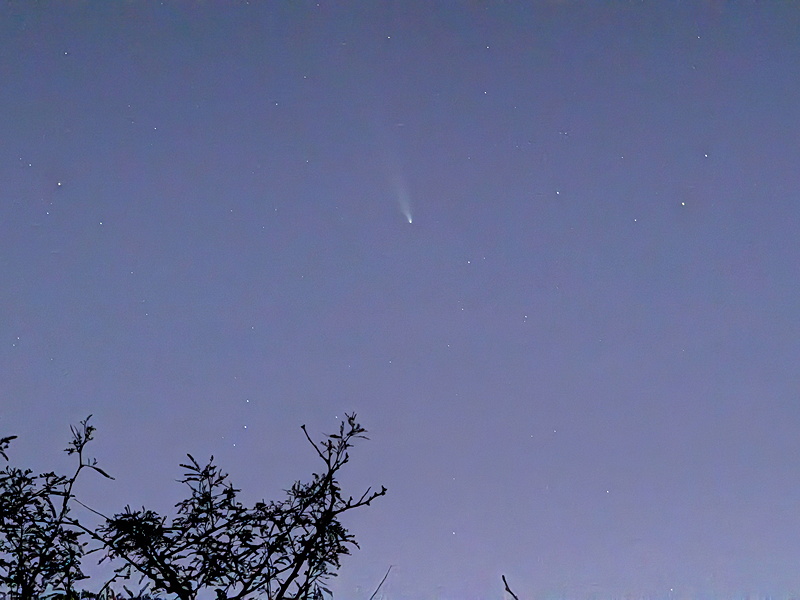
1841 MST: The comet was now faintly visible to the naked eye.
1845 MST: Back in the observatory. Attached the LiDAR Cover to the iPhone 15 Pro Max and mounted the iPhone on the 2" 30mm eyepiece using the Accuview 3-Axis Smartphone Adapter.
1855 MST: iPhone afocal 81X photo (Night Mode, 30 seconds, 1X lens) of the comet. Lots of nice details in the comet's head. A passing cloud is at the bottom of the image.
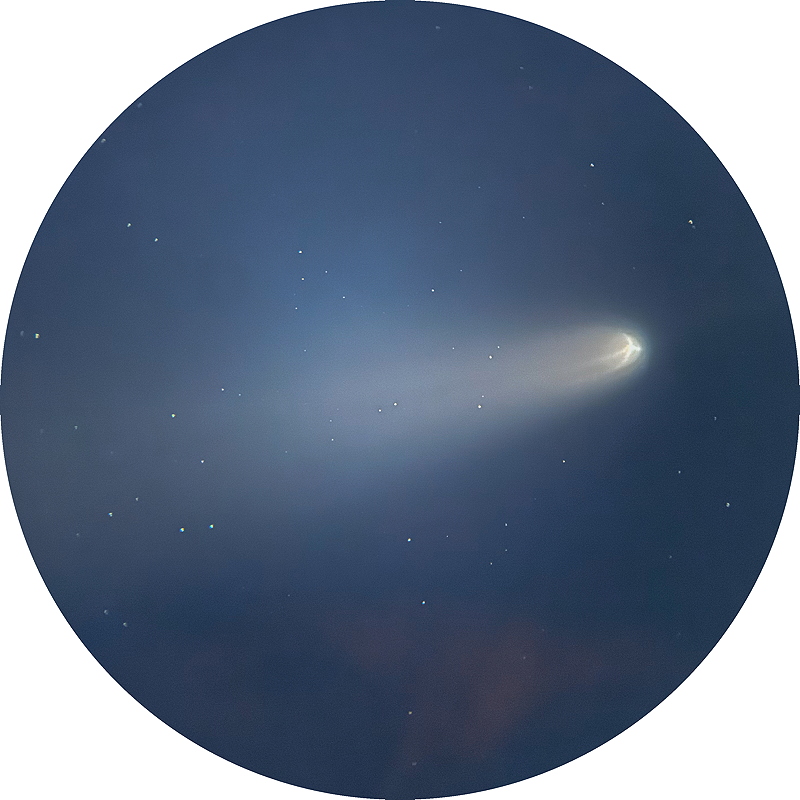
1900 MST: Moved to a higher elevation to observe the comet in the bright moonlit western sky.
1932 MST: D850 DSLR photo (f/2.8, 4 seconds, ISO 2000, FL 35mm) of Comet Tsuchinshan-ATLAS.
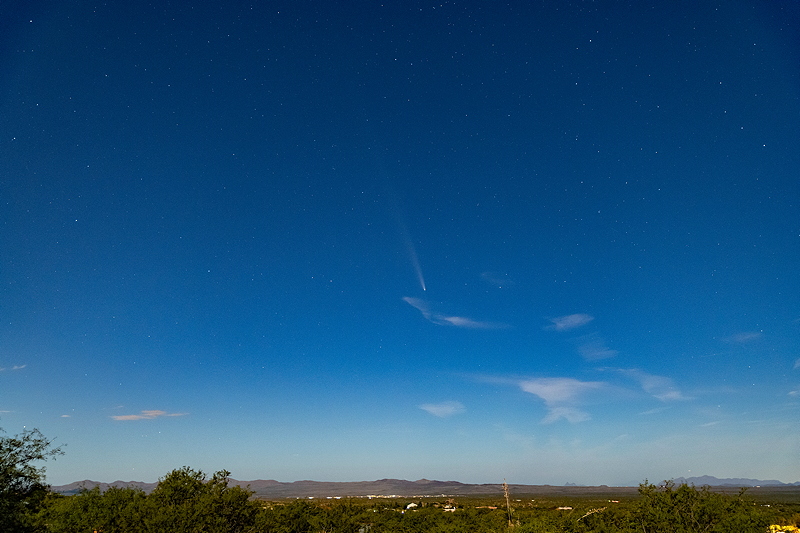
1935 MST: Went back to the observatory to take this iPhone photo (Night Mode, 10 seconds, 1X lens) of the comet in the sky with the 12" telescope pointing at the comet.
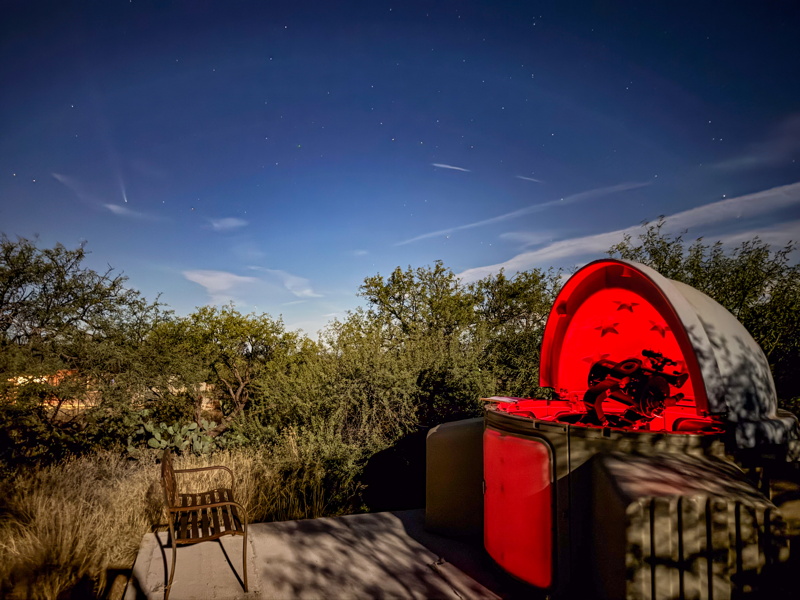
At the 12" telescope I tried to view the comet, but clouds obscured it. I viewed the Moon, 81X.
1946 MST: Handheld iPhone afocal 81X photo (1X) of the just past full Moon.
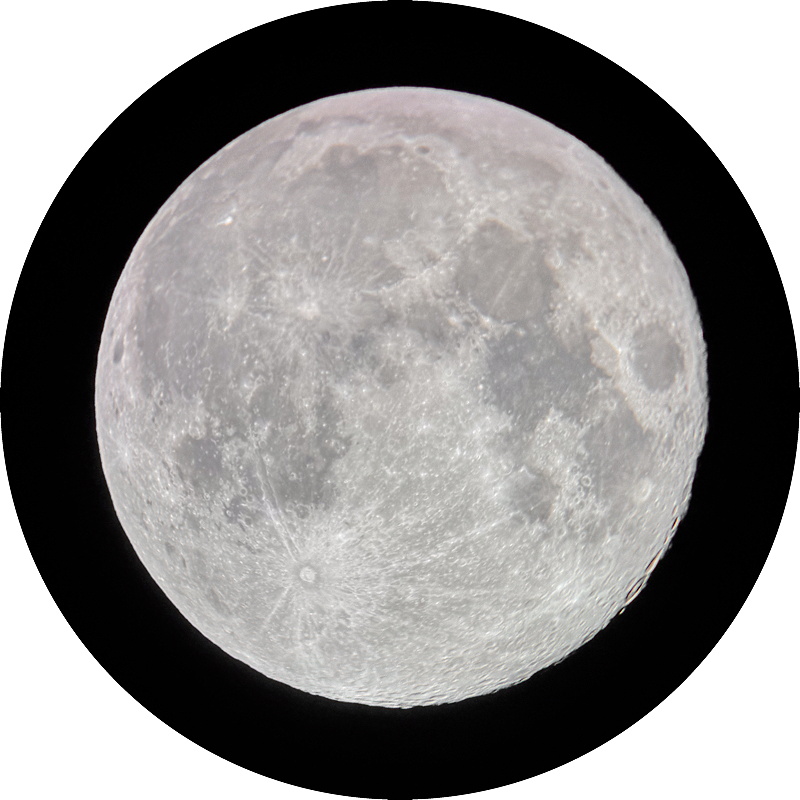
I then viewed the Moon, 102X. I had hoped to get a photograph of the near Full Moon projected onto the observatory dome with the comet in the sky, but the comet continued to be obscured by clouds.
1959 MST: Back at the higher elevation, took this D850 DSLR photo (f/2.8, 4 seconds, ISO 2000, FL 35mm, cropped) of the comet and clouds in the bright moonlit sky.
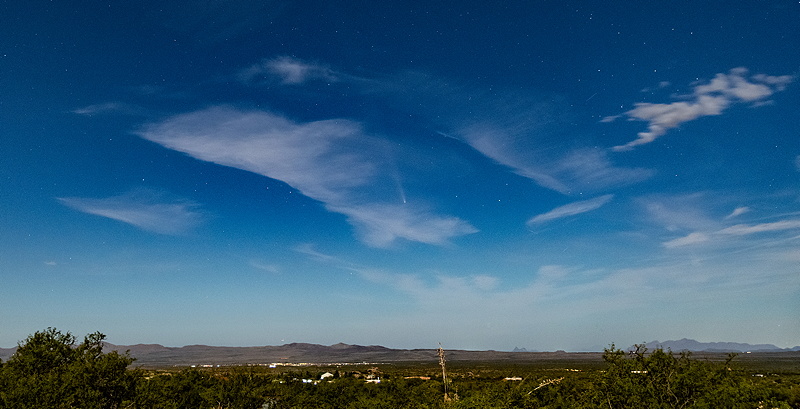
2002 MST: At the observatory I took this handheld iPhone photo (Night Mode, 3 seconds, 1X lens) of the near Full Moon on the observatory dome. The view is towards the northern sky.
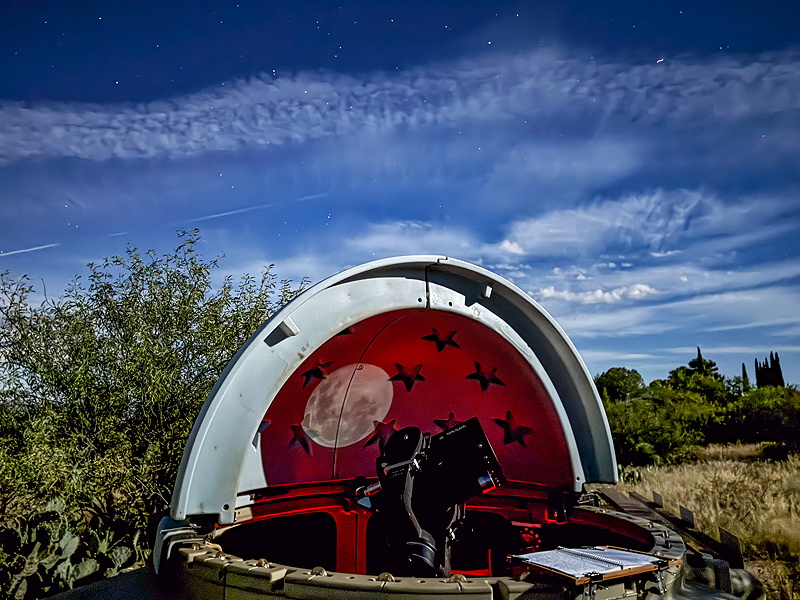
Lastly, I viewed the planet Saturn, 102X.
2011 MST: LX600 OFF.
2028 MST: With rain the forecast, I put the Dome Cover ON.
|
Close: Thursday, 17 October 2024, 2031 MST Temperature: 66°F |
Session Length: 2h 28m Conditions: Partly cloudy |
Comments are welcome using Email. Please read the Email Etiquette guidance.
Cassiopeia Observatory Home Page
Copyright ©2024 Michael L. Weasner / mweasner@mac.com.
URL = http://www.weasner.com/co/Reports/2024/10/18/index.html
